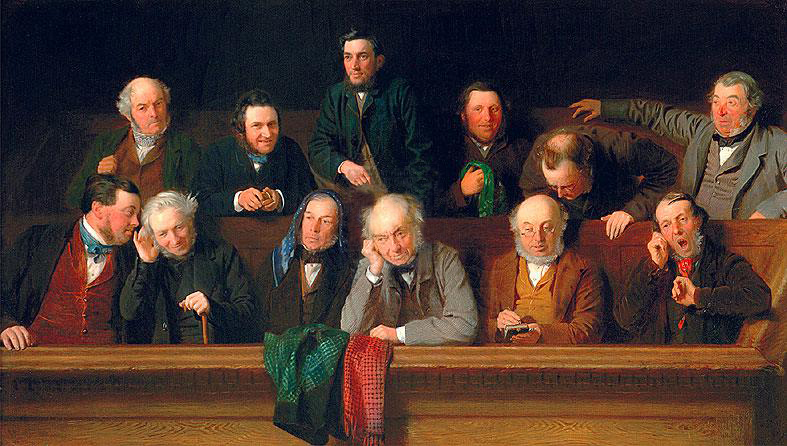
In a recent case, the Court of Appeal dealt with an appeal concerning an ex-police officer who served on a jury.
When the prospective juror was summoned for jury service, he wrote to the court in the following terms:
“After discussing my forthcoming juror duty with my wife, I realise that I was deluded in believing that I could come to an unbiased decision.
Thirty years’ service as a police officer (I retired ten years ago) has left me with the unshakeable belief that if both the investigating police officers and the Crown Prosecution Service feel that the evidence is sufficient to charge, then the individual is most definitely guilty of the offence(s).
I suspect that my time in the jury room after the evidence has been heard will be spent just persuading the other jurors of the defendant’s guilt. I am willing to answer the summons and perform jury service, but believe it is only fair that I point out the bias that I now realise I hold. I apologise for any inconvenience caused.”
This was not, however sufficient for excusal from jury service and the following exchange took place with the trial judge:
“JUROR 11: I think that, after 30 years’ service and spending a lot of time in trials, that I am biased without a doubt. I should have realised this when I first got it, my service, my summons through. I submitted that letter some two weeks before being here. I also sent an email through to the Central Jury Summoning Service stating the same thing and thought that I will probably be told that I wouldn’t come here.
THE JUDGE: Yes, jury selection is not a voluntary process —
JUROR 11: No.
THE JUDGE: — where people can do it if they feel like it. And you have not actually answered my question – and it is really important you listen to my question and answer it.
JUROR 11: Sorry, yes.
THE JUDGE: Are you prepared to abide by the affirmation, which is: ‘I do solemnly, sincerely and truly declare and affirm that I will faithfully try the defendant and give a true verdict according to the evidence’? Are you prepared to abide by that affirmation?
JUROR 11: If I make that affirmation, I will abide by it, your Honour. THE JUDGE: You will?
JUROR 11: I will, your Honour.
THE JUDGE: Right. So you are saying that you are in a sense warning everyone that you have potential bias, but what you are saying is that, if called on, you are prepared to abide by that affirmation and give a true verdict according to the evidence?
JUROR 11: That’s correct, your Honour.
THE JUDGE: And you understand what that means?
JUROR 11: Yes. THE JUDGE: It means putting aside bias or any preconceptions and trying the case according to the evidence.
JUROR 11: Yes, Your Honour.
THE JUDGE: And that is a solemn affirmation.
JUROR 11: That is correct, yes. Yes, your Honour.
THE JUDGE: Which, if you take it – if you are selected – you then have to abide by. It is binding. Do you understand that?
JUROR 11: I do, your Honour.”
How Did the Judge Deal with This?
The Judge allowed the ex-police officer to serve on the jury, and following conviction, the defendant, not surprisingly, appealed.
Did the Defendant Win His Appeal?
The Court of Appeal held that because the juror had indicated he would faithfully follow the juror’s oath, the conviction was safe.
The court held:
“Juror 11’s letter was a statement of actual bias: an expression of a fixed view that any person charged and brought to trial was guilty of the offence charged, whatever evidence might be adduced. The same may be said of Juror 11’s initial response to the Judge in the exchange which we have quoted. Juror 11 did not, however, maintain that stance. On the contrary, having been confronted with the importance of the civic duty of jury service and the words and meaning of the affirmation he would be required to make, he twice stated, in unequivocal terms, that he would make and abide by that solemn affirmation and would try the case according to the evidence.”
Likely, the Court of Appeal was also eager, on public policy concerns, not to provide a “get out of jury service card” to future jurors. The court stated:
“The Judge was right not to take the letter at face value and to stand Juror 11 down without further inquiry. As he correctly observed, jury service is a very important public duty and not something which a person summoned for jury service need only do if he or she feels like it. The legal responsibilities of jurors, including their duty to try the accused only on the evidence heard in court, are clearly spelled out in a notice issued to all, and are reiterated in the standard instructions given at the start of the trial to those selected by ballot to serve on a particular jury. It is of course important that an accused person is not tried by a jury which includes a person who is genuinely incapable of returning a true verdict in accordance with the evidence in the case. But judges must be alive to the risk that a prospective juror who asserts an irremediable bias either for or against all persons accused of crime, whatever the circumstances and whatever the evidence, may merely be looking for a means of avoiding his duty.”
What Does the Legal Community Think of This Ruling?
There have been some mixed views expressed by lawyers following the publication of this judgment, some praising the juror for his openness (which, to be fair, cannot be faulted), but in the main, highly critical of the decision of the trial judge to allow the juror to serve, and the Court of Appeal in maintaining the safety of the conviction.
How Can We Help?
Here at Broadbents Solicitors, we ensure we keep up to date with any changes in legislation and case law so that we are always best placed to advise you properly. If you would like to discuss any aspect of your case, or are in need of criminal legal aid, please give us a call today on: Alfreton: 01773 832 511, Derby: 01332 369 090 and Heanor: 01773 769 891. Alternatively, please fill out our online enquiry form where we will be in touch as soon as possible.
Image credit: The Jury (1861) by John Morgan, Buckinghamshire County Museum.




